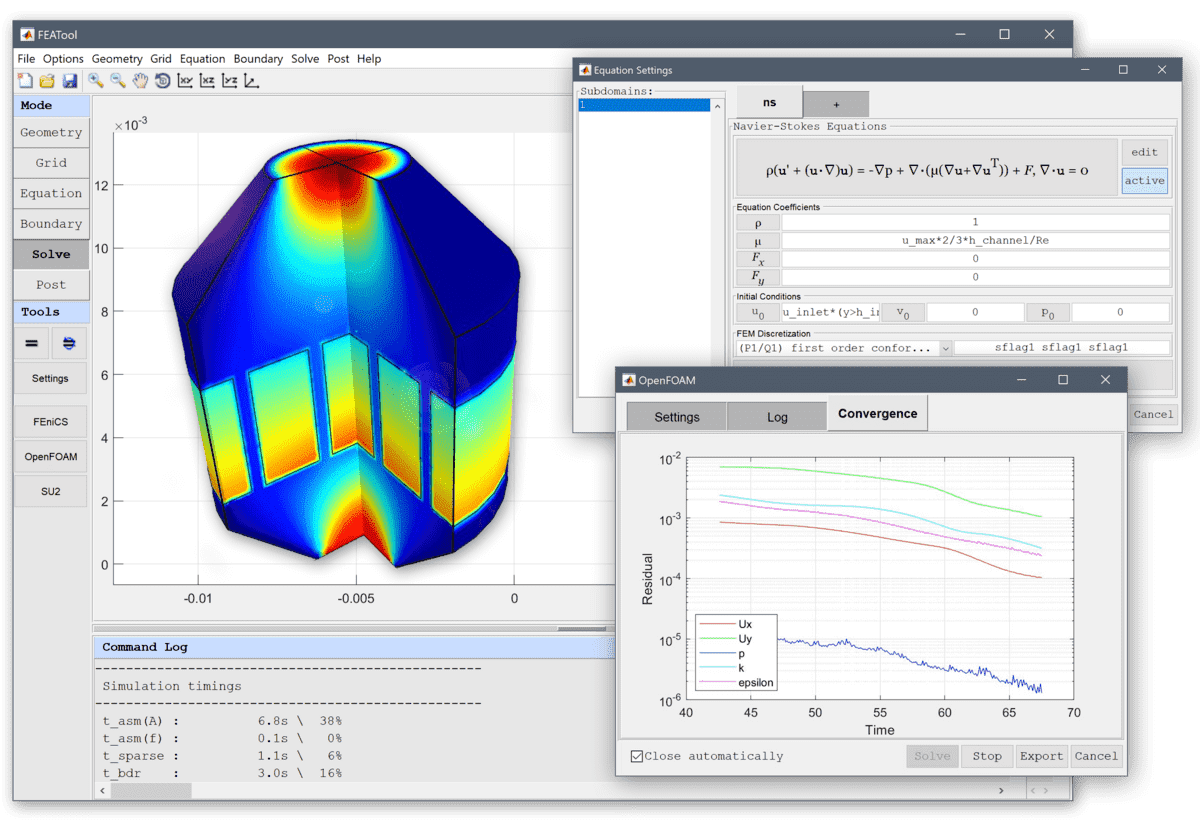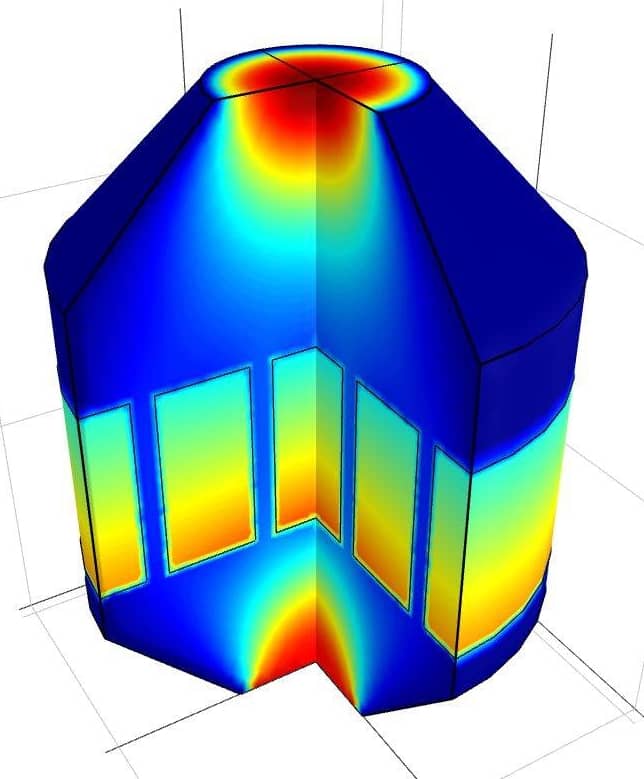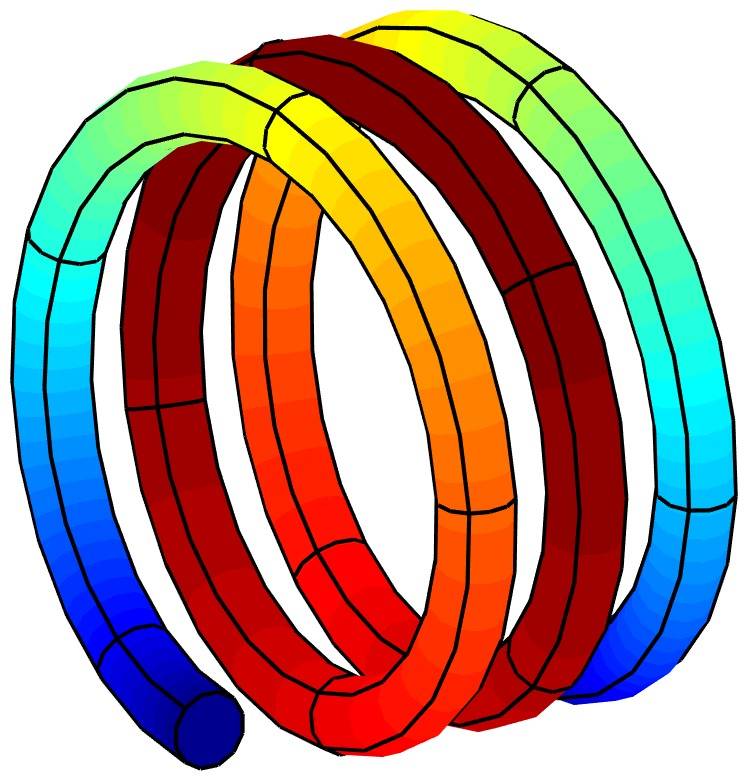Flow in Porous Media
Axisymmetric laminar fluid flow in a diffusor duct or reaction chamber blocked by sections of a porous material. The model features several partially active subdomains with the Brinkman equations governing the fluid flow. The flow field with and without the porous material is compared. This model is available as an …
Heat Exchanger
This heat exchanger example illustrates the multiphysics modeling capabilities of FEATool. The model consists of a series of heated pipes surrounded by a fluid at a lower temperature, and features effects of both free and forced convection. Two types of physical phenomena are considered, fluid flow which is modeled by …
Resistive Heating in a Tungsten Filament
This example models resistive Joule heating where the resulting current from an applied electric potential will heat a thin spiral shaped Tungsten wire, such as can be found in incandescent light bulbs. The filament reaches an equilibrium temperature where the internal heat generation is balanced by radiative heat loss …



